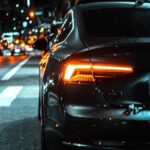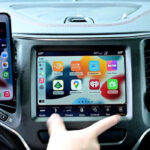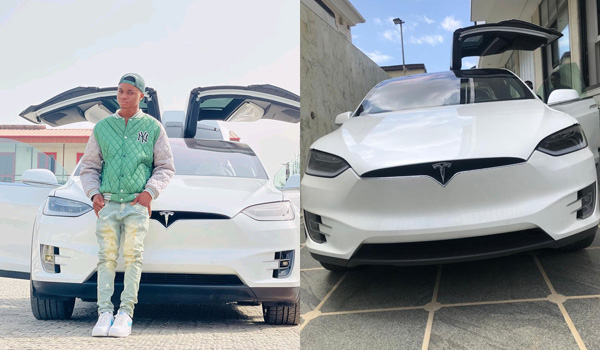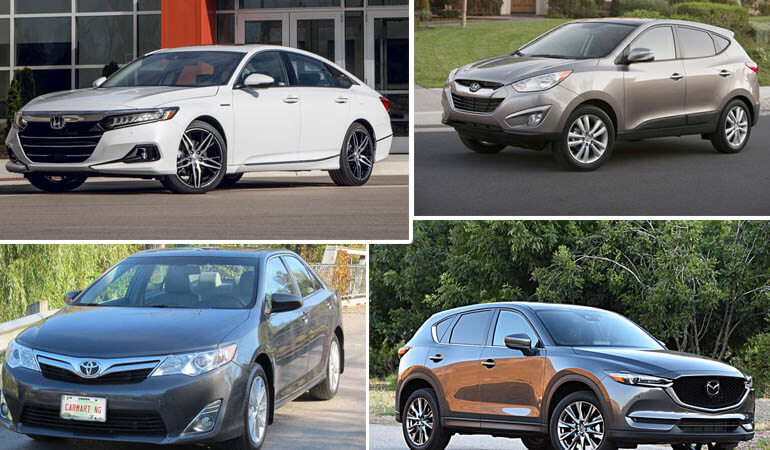The Honda brand is known for engineering excellence and has long stood for that. As a result of this, there are not many truly bad vehicles that wear the Honda’s “H”. Most are strong, dependable, feature-rich, and spot-on the money. The automaker has long offered an array of expertly engineered models, most of which are honed to the point of shiny diamonds. But even with these, there have been a few tragedies and the ironic thing is that they all seem connected by the same themes: Too complicated, too confusing, too smart and complex for the inherently simple job of driving down the street and providing a defined set of benefits.
Table of Contents
For example, consider the Civic del Sol. Instead of building a simple roadster as they did later with the S2000, Honda overthought it and rolled out the del Sol. As a result, it effectively replaced the brilliant CRX. Also consider the Accord Plug-in Hybrid, Fit EV, and CR-Z. Sure, you can refine a superb vehicle that already exists but why would they make a mess with it and answer a question no one asked? Or over-think a car into oblivion and ridicule?
So, now let us take a look back, enjoy, and remember some of Honda’s most over-thought and over-wrought cars. Our list of the ten worst Hondas of all time is based on the following: they had to be terrible, dull, weird, pointless, or all of the above. The 10 worst Hondas are listed below, in chronological order. They include;
1993 to 1997 Honda Civic del Sol
To appreciate the true head-scratching quirkiness of this car, think back to the early ’90s. Fresh off two successful generations of the CRX and in need of a Mazda MX-5 Miata competitor, Honda turned left and rolled out the Civic del Sol but on the bright side, it made Mazda happy and probably created more fans for them.
Based on the Civic, the del Sol was a weirdly soft-looking, front-wheel-drive sports car with a leaky Targa top and power vertical rear window. All of that added up to something like an open-air experience, with a couple more hundred pounds added onto a car that was supposed to be light.
Maybe the del Sol (the Civic name was dropped in 1995) was cursed with too much complexity. Indeed, the bones of the 2-seater were strong. The 1994 VTEC trim offered a substantial power upgrade, yet still, it missed the mark in terms of creating a simple and straightforward appeal – the kind made famous by the CRX. The Honda del Sol was the fun car that just tried too hard.
1994 Honda Passport
The rise of the Ford Explorer motivated Honda to re-badge an Isuzu Rodeo as the Passport and tack on a few hundred dollars to the sticker price in order to cash in on the SUV party. But why didn’t they just build their own? Honda was not convinced SUVs were really a thing. It was not that the Rodeo was so bad. After all, it was a decent truck, a practical utility vehicle but it was more of an Isuzu than a Honda. Badging it as such was a quick and dirty solution to solve a big gap in the company’s line-up.
1995 Honda Odyssey
After Chrysler had sharply defined the minivan segment in the mid-eighties, the “Oddy” lasted almost ten years later as a van-like family hauler that looked suspiciously car-like.
The first version of the Honda Odyssey was a small, underpowered van-thing based on the Accord platform. It did not offer sliding rear doors. It had no V6 engine option and yet it was not cheap to buy. It was not a total loss, though. The first-gen Odyssey was a quality-built vehicle, and it offered a folding rear seat, a relatively new contraption at that time. But overall, the original Odyssey was a victim of budget cuts driven by turbulent times. Regardless, subsequent Odysseys have since delivered class-leading and historic innovation and value to families across America.
2002 Honda Civic Si
What makes a great Civic Si? It actually comes down to a balance between weight and revvy power, combined with nimble handling and a strong dash of practicality. On that note, then, the seventh generation of Honda’s amazingly fun car is arguably the worst of the batch. Just look at it from this perspective: You are Honda, and you are on a roll with the fifth-gen 1992 version and the 1999 coupe. People love the Civic Si. Enthusiasts are a-gog. Everything is wonderful. So, you get ready to rock the motoring world with a new Euro-designed Si, hatch-only. But it looks like a doorstop on wheels, it’s got a stick shift jutting out of the dashboard, and it weighs more.
Add to these detriments a move away from the beloved, higher-revving B-series 4-cylinder engine as well as questionable suspension changes, and this collection of characteristics sealed the worst-ever Civic Si deal.
2005 to 2007 Honda Accord Hybrid
Driving the Honda Accord Hybrid is fun because they are usually powerful but this vehicle made no sense. It was an exceptional feat of engineering. The sporty ride, peppy acceleration, and confident handling made for capable Accord. That is great except that it failed at the one thing all hybrids must do.
Hybrids, just like small cars, must deliver great fuel economy. Then, if possible, offer up a decent driving experience as a bonus. The 2005 Honda Accord Hybrid, unfortunately, missed the mark and became the Hybrid model no one asked for. Why buy one when you could pay hundreds less for a conventional Accord and get the same thing? Exactly the point.
2010 to 2015 Honda Accord Crosstour
With the oncoming demise of the family sedan as consumers rush to embrace crossover SUVs, it seems weird that the Honda Accord Crosstour failed. It even has a “cross” in its name.
It was designed to compete with the Subaru Outback, Honda elected to make the Crosstour different for no good reason, kind of like when the company thought Miata buyers could be love-struck by the del Sol. So, instead of making it a boxy wagon, Honda gave it a fastback hatch that made the Crosstour look a bit like a constipated Accord.
The result was an ambiguous car/wagon/crossover that was whatever you wanted it to be, whenever you wanted it to be that thing. For five long model years, this crossover gathered dust on dealer lots. Even a name change to remove the venerable Accord identity did nothing to make any difference. It lives on as another overly complicated idea that left car buyers wondering and pondering why the heck Honda did not just mold it in the template of the Outback.
2010 to 2014 Honda Insight
The rebirth of the Insight could have been a big deal. It should have been a monumental moment in automotive history, especially when you consider that the nameplate represents the dawn of a modern era of motoring.
From the original Insight one can link it to today’s proliferation of drivetrain choices. From gas-electric hybrid to advanced internal combustion, electrics, fuel cells and more, the first-generation Insight blazed a trail from which we all benefit.
The second generation is not so much of the same. It was too much like the Prius and not better. Louder, narrower, cheaply outfitted, and not close to beating the Toyota when it came to fuel economy, the second Insight was a crappy knock-off of the Prius and that made it a forgettable car with an unforgettable nameplate, by a legendary brand.
2011 to 2016 Honda CR-Z
Was this a son of the CRX? It is not sure yet but the idea was worth contemplating. In classic Honda tradition, the CR-Z attempted to answer every question ever asked – and a few never considered. Was it a hybrid? Was it a historic successor? Did it come with a manual shifter? Was it two-seater? Efficient? Sporty? All of the above? But it only had to be fun and efficient for two people, with a little cargo room tossed in, just like the original CRX. Unfortunately, in trying to be too many things to too many people, the CR-Z was a compromise from the start and died a slow death after five model years.
Sluggish as a sloth and plagued with issues such as a high price, a low ride height, and horrible blind spots, the CR-Z succeeded only in prolonging the wistfulness for the CRX that Honda fans felt whenever they passed it on the road.
It was also the last unfortunate hybrid in a batch of models that seemed to reflect Honda’s failed ability to engineer higher levels of performance, zero emissions, and fuel economy. Today, recent Honda hybrids have shown that the engineering department may well have figured out how to inject romance into such a staid and blasé powertrain.
2013 to 2015 Honda Fit EV
The Fits are really nice models, along with EVs but the idea of putting them together is what is not ideal because of two things which are; compromise and availability. It just does not make much sense to retrofit a Fit into an EV.
Perhaps at the heart of it is just that: The Leaf is an EV first and last, while the Fit is a great little car that gets great gas mileage without any electro-buzzy after effects. By using the Fit for its grand EV experiment, Honda removed things like the Magic Seat, compromised the value of the vehicle, and then did not make it available for purchase anyway.
2014 to 2015 Honda Accord Plug-in Hybrid
The predecessor of today’s excellent Honda Clarity Plug-in Hybrid seems worth the experimentation, if that is what you call an Accord that lasted two model years and was sold only in New York and California. But does it now seem a little short-lived?
The fact is that much like the Accord Hybrid, the first-generation Accord Plug-in Hybrid survived just a couple of years before Honda pulled it back. The reason, you may ask? Perhaps a low electric-only range of 13 miles had something to do with it – a number that was not quite up to the same level with its rivals.
Mostly, the sedan did not completely capture the three things that matter most to plug-in buyers which are convenience, range, and charging time. Those who wanted to drive electric-only could only do so if there was lots of time for a charge up, and if their total commute was less than 30 miles. On the plus side, the Accord did manage a total range of more than 500 miles per tank of gasoline.
Still, the 2014 Accord Plug-in Hybrid either kept up with the competition or fell behind. With a sticker price of around N16.4 million, it was an expensive commitment to a short-term solution that did not really break new ground.
Have 1 million naira and above to Buy or Sell Cars In Nigeria? Check carlots.ng
All rights reserved. Reproduction, publication, broadcasting, rewriting, or redistribution of this material and other digital content on carmart.ng is strictly prohibited without prior express written permission from Carmart Nigeria - Contact: [email protected]







